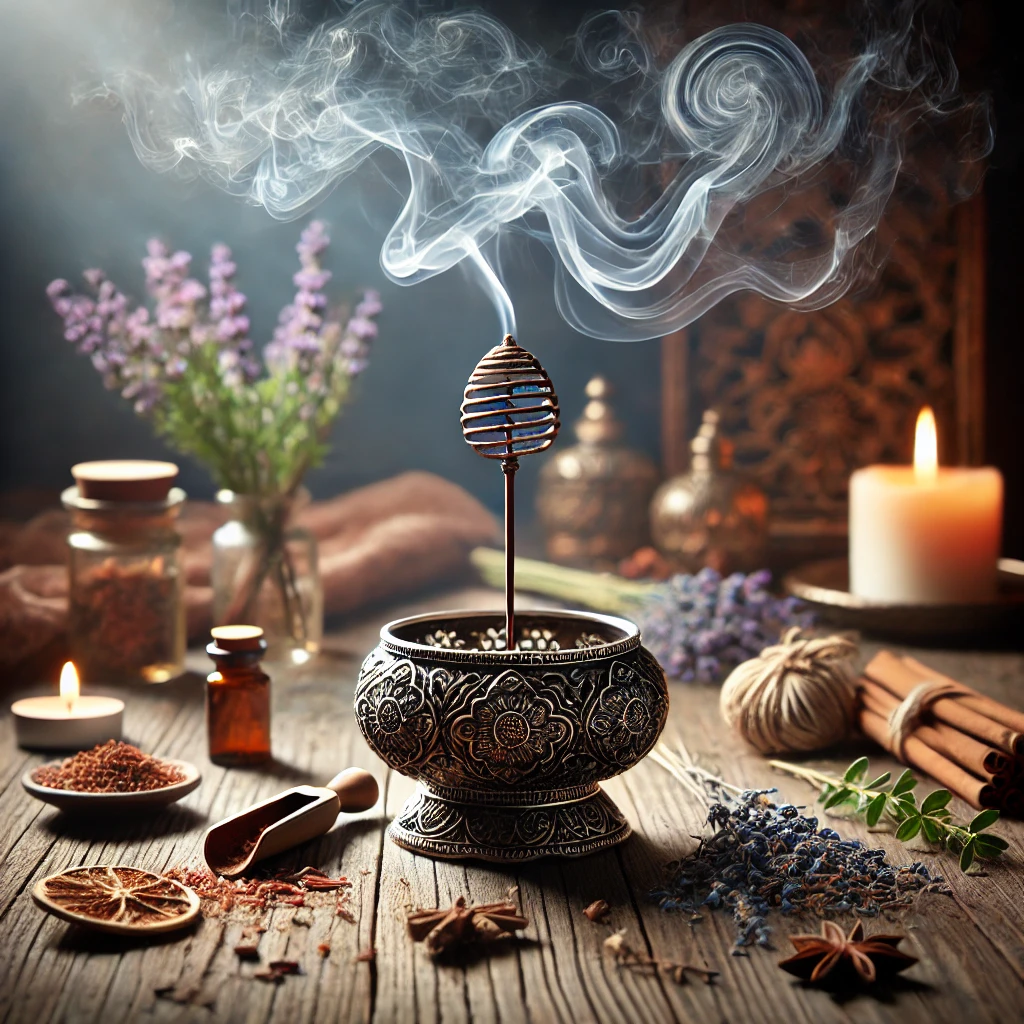Incense is a substance made from aromatic plant materials that releases fragrant smoke when burned. It has been used for centuries across cultures and traditions for spiritual, meditative, and practical purposes, creating a sacred or calming atmosphere.
Key Components
-
Base Ingredients
- Incense is typically made from natural materials like resins (e.g., frankincense, myrrh), woods (e.g., sandalwood, cedar), herbs, flowers, and essential oils.
-
Forms of Incense
- Stick Incense: Thin bamboo sticks coated with a fragrant paste.
- Cone Incense: Shaped into cones for slow burning.
- Loose Incense: A blend of raw materials used with charcoal or an incense burner.
- Resin Incense: Pure resins burned over charcoal for intense fragrance.
Uses of Incense
-
Spiritual and Religious Practices
- Commonly used in rituals, ceremonies, and offerings to invoke divine presence, purify spaces, or symbolize prayers rising to the heavens.
-
Meditation and Relaxation
- Fragrant smoke helps to calm the mind, deepen focus, and create a serene environment.
-
- Certain scents promote specific emotional or physical benefits, such as lavender for relaxation or frankincense for grounding.
-
Cleansing and Purification
- Used to clear negative energy from spaces, objects, or individuals, often in combination with smudging rituals.
-
Cultural and Traditional Significance
- Integral to practices in Buddhism, Hinduism, Christianity, and Indigenous traditions, reflecting diverse cultural symbolism and purposes.
Popular Scents and Their Meanings
- Frankincense: Purification, spiritual connection, and meditation.
- Sandalwood: Calmness, grounding, and protection.
- Lavender: Relaxation, stress relief, and emotional balance.
- Patchouli: Sensuality, abundance, and grounding.
- Cedarwood: Strength, purification, and connection to nature.
Benefits of Incense
- Enhances spiritual practices and meditation.
- Purifies and uplifts the energy in spaces.
- Promotes relaxation and emotional well-being.
- Creates a sacred or welcoming atmosphere.
Safety and Usage Tips
-
Ventilation
- Always burn incense in a well-ventilated area to avoid inhaling excess smoke.
-
Fire Safety
- Use appropriate holders or burners, and never leave burning incense unattended.
-
Allergies and Sensitivities
- Choose natural, high-quality incense to minimize reactions to synthetic additives.
Cultural Perspectives
-
Asian Traditions
- Incense is central to Buddhist and Hindu practices, symbolizing enlightenment, offerings, and the impermanence of life.
-
Christianity
- Often used during Mass and other ceremonies, representing prayers and divine connection.
-
Indigenous Practices
- Incorporated in smudging rituals for cleansing and connecting with the spirit world.
Further Exploration
- How to Choose the Right Incense for Your Practice
- The Role of Incense in Different Spiritual Traditions
- DIY Incense Blends: Creating Your Own Scents
Incense is a timeless tool that bridges the physical and spiritual worlds, enriching rituals, relaxation, and the energy of spaces with its evocative aromas.

